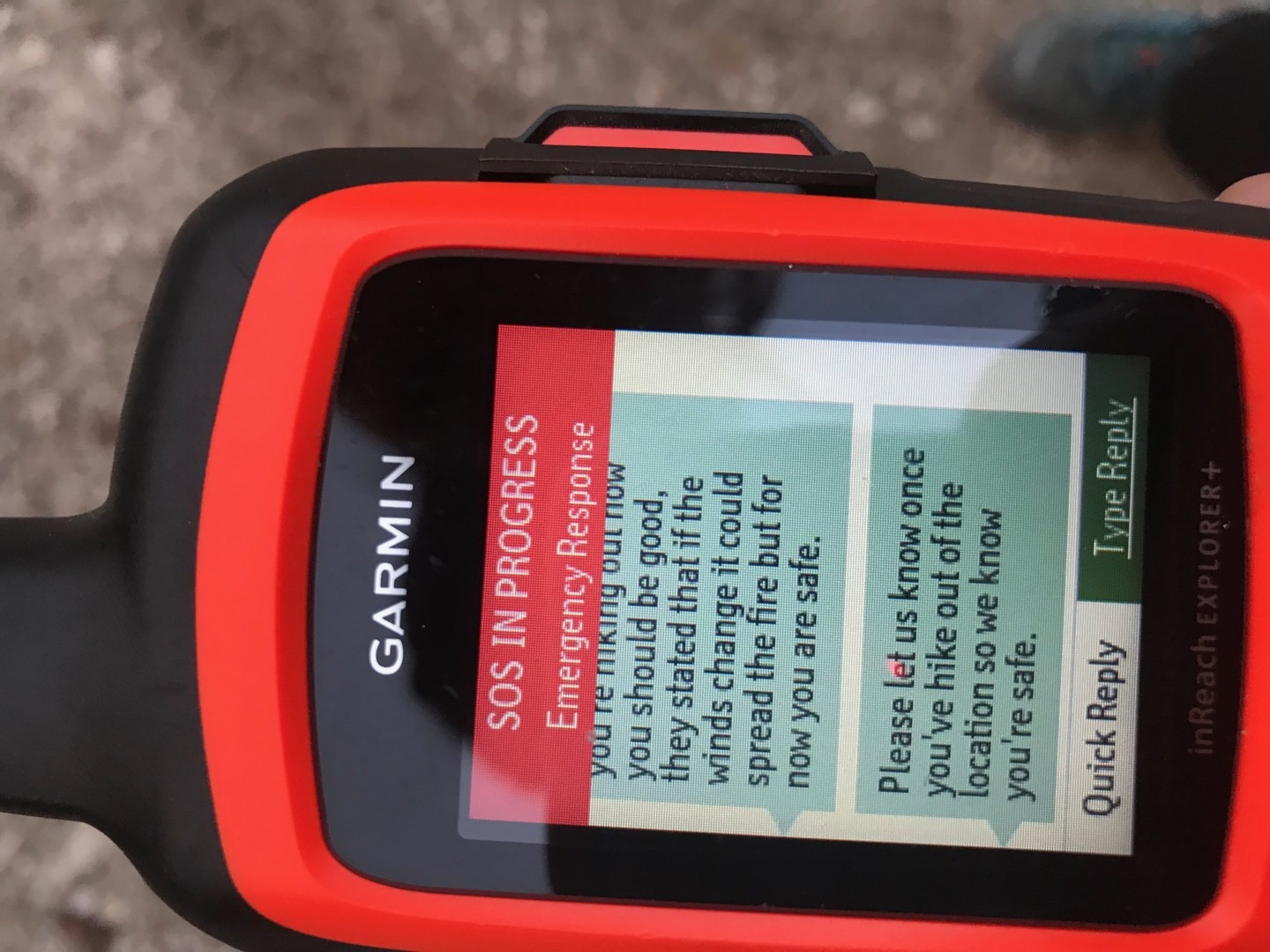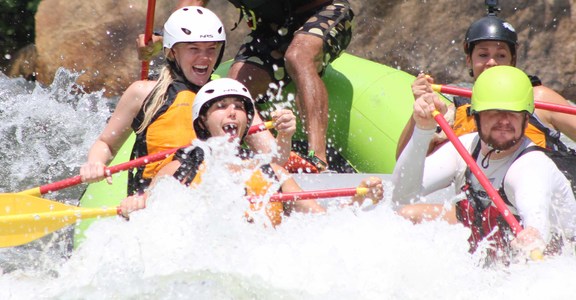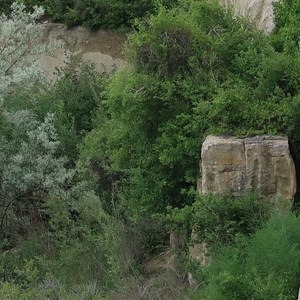This article originally appeared as part of Women in the Wild 2018.
On July 8, 2018, I experienced a multitude of harrowing events while hiking Mount Whitney that resulted in me sending an SOS signal via my Garmin inReach for the first time ever. After writing about my experience, I received quite a few questions on the logistics of activating the emergency signal.
- "What happened when you activated it?"
- "I didn't know you could activate unless your life was in imminent danger."
- "What did the emergency response center tell you to do?"
- "Were you nervous?"
- "How long did it take until you received a response?"
- "Did they charge you?"
Although I was able to safely hike out alone, knowing that I was in communication with the International Emergency Rescue Coordination Center in regard to the direction of the Georges fire gave me reassurance that I could safely exit the Mount Whitney Trail without coming in contact with the fire.
What are satellite messengers and how do they work?
For the full description and comparison, visit my blog post on SOS and communication devices. These handheld devices, such as those from SPOT and Garmin, are two-way communication devices that allow you to send messages to an emergency responder and receive messages back. Satellite messengers are GPS-based devices that rely on either of two commercial satellite networks, Iridium or Globalstar, rather than the military network used by PLBs (this is why there is a monthly subscription). Besides the two-way communication, these devices also allow you to send preset text messages to your contacts, link your coordinates to your social media, download maps, and they can also be used as a navigation device. Fancy, right?
Activating the SOS button
During an emergency, you can contact the GEOS International Emergency Rescue Coordination Center (IERCC) to request help. This center picks up your coordinates and, after communicating with you, sends a message to the appropriate emergency service response team in your area. Pressing the SOS key (lift the cover on the side of the device and hold down the SOS button) sends a message to the rescue coordination center. I made the decision to activate the SOS signal because I was unsure where the fire was located and if I would be able to hike out safely. I saw the lightning that initiated the fire while I was hiking down Mount Whitney on the switchbacks, and once I was within 2 or 3 miles of the Whitney Portal Trailhead, I noticed the sky was covered in thick smoke and ash. I was unsure where the fire was or if it was safe to continue hiking. Once I held down the SOS key, a loud noise on the device coupled with a 20-second countdown began. I thought to myself, “This just got real.” During this countdown, you have the option to immediately cancel this SOS signal; however, I was confident that I needed to know safety information in regard to the fire. Was I nervous? Yes. The first message that automatically sent once the countdown ended was “I have an emergency, and I need you to send help.” All I could think was, “Oh geez, I hope they do not automatically send a helicopter!” Within one minute, I received a text message on my Garmin inReach stating they have received my SOS signal and they asked if I was alone. I responded “yes.” I started to type my reasoning for contacting them only to realize that I had to type out each individual letter by moving the cursor and selecting the letter in order to make each word (think back to those old school Nokia phones). This took forever, and my spelling and grammar were unbearable. I finally explained, in terrible spelling, that I was 2 to 3 miles from Whitney Portal, that I had spotted a fire, and that and I needed to know if I was able to hike out safely. I quickly remembered that I paired my iPhone to the Earthmate app, which allows you to access text messages, maps, weather forecasts, routes and waypoints on your smart phone. I was able to properly type a message from my iPhone to the GEOS International Emergency Rescue Coordination Center (IERCC) center fully explaining what I just went through and properly asking if I can hike out safely. THIS WAS A GAME CHANGER. They responded that they were contacting the local sheriff’s department and checking on the fire. Within 26 minutes from my initial SOS activation, I received the okay that I was able to hike out safely, but if the winds changed directions they would contact me. They also asked me to send them a message once I got off the trail safely
Emergency Contacts Are Helpful
During my communication with GEOS International Emergency Rescue Coordination Center (IERCC), they contacted my brother, who is my emergency contact. He did not answer his phone on the first ring, assuming a Texas number was probably a telemarketer (I don’t blame him). He picked up when they called back five minutes later, and they calmly and kindly explained who they were and why they were calling. They asked my brother if I was alone or in a group, and he told them he assumed I was with my hiking group (little did he know they had hiked on without me). They updated him on my experience and told him about the fire and explained they will be in contact with him until I reach safety. It took me 1 hour and 15 minutes to exit the trail, and over this period of time, they contacted my brother three different times, updating him on my location and finally assuring him that I was safely off the trail.
Sending your location
For the first 10 minutes of your rescue, an updated location is automatically sent to the emergency response service every minute. To conserve battery power after the first 10 minutes, an updated location is sent every 10 minutes when moving, and every 30 minutes when stationary. Once I returned home and logged into my Garmin account, I was able to see every location that was automatically sent to the rescue center.
Not every emergency results in a helicopter rescue
Many people assume that activating an SOS signal means you need a rescue right away; however, this is not the case. Activating an SOS signal when you are in a dangerous or unknown situation can be helpful to alert emergency services that you may need help in the impending future or you need advice on whether you can safely continue your hike. If you become lost, injured, are sick or you are at the mercy of a natural disaster, it may be wise to alert emergency services earlier rather than later so they can give you the proper advice. They may tell you that you should self-evacuate out of the area, or they may send someone to hike into your location to evacuate you out and, of course, in extreme rescue situations, you may need to be evacuated by a helicopter. There are no absolutes, no black and white areas, and many of these are judgment calls that you must make while you are in the outdoors. Go with your gut feeling and do what you feel is right.
Women in the Wild is a movement that recognizes the amazing women who enrich the outdoor community with their passions, inspirations, and accomplishments. Outdoor Project is proud to grow this campaign in 2019 with the help of guest editor and 2018 #womaninthewild Georgina Miranda, adventurer, entrepreneur, mountaineer, and founder and CEO of She Ventures. We're proud to open our platform once again for the incredible stories and photography of women throughout our community. From in-depth interviews with outdoor advocates, influencers, and athletes to female-focused content from the community, Women in the Wild 2019 aims to amplify the voice of women in celebration of female fortitude, strength, and camaraderie in the outdoors.
For a complete list of content published in correlation with Women in the Wild 2019, visit Women in the Wild 2019: Amplifying Women in the Outdoors.






Comments
Sign In and share them.